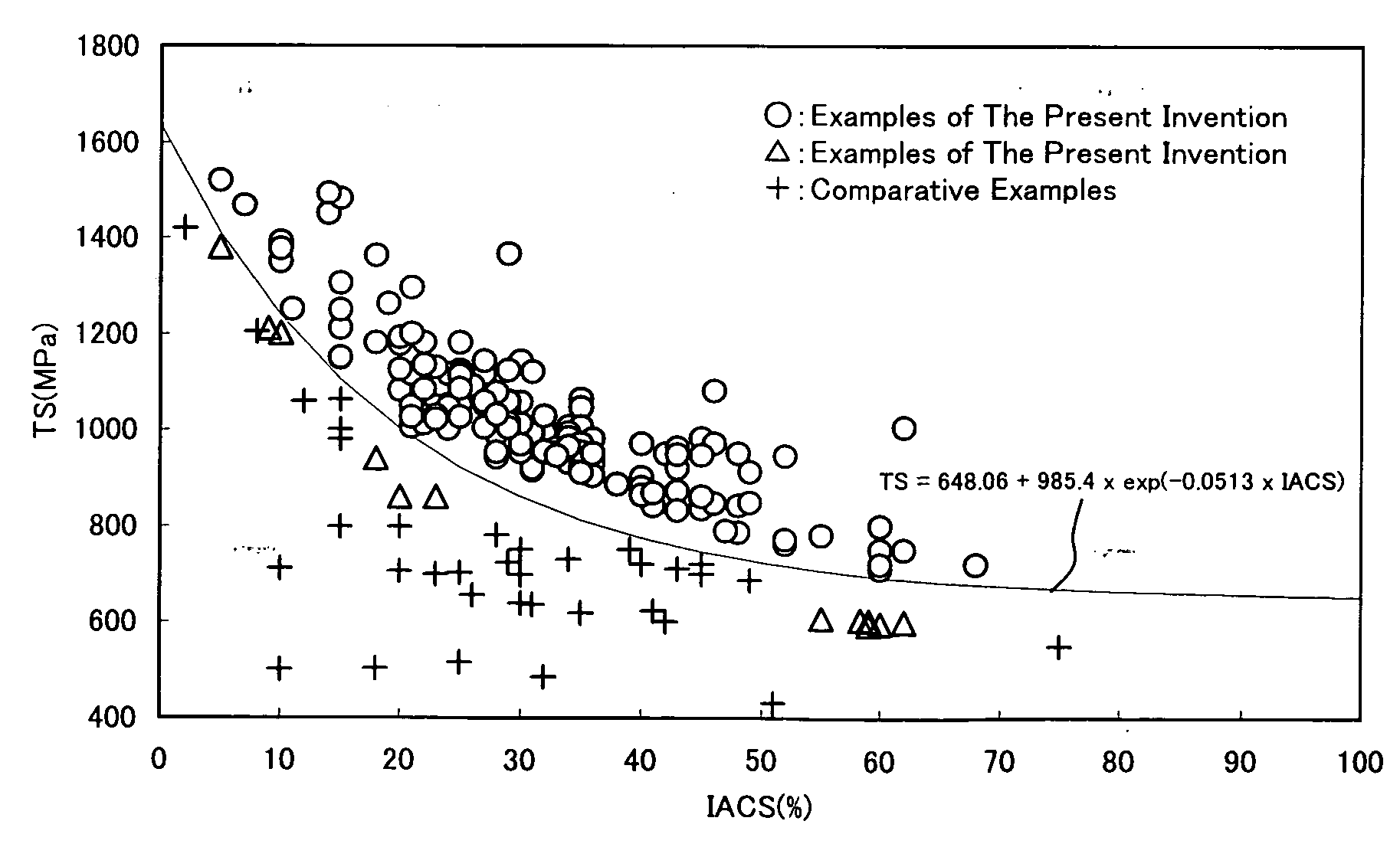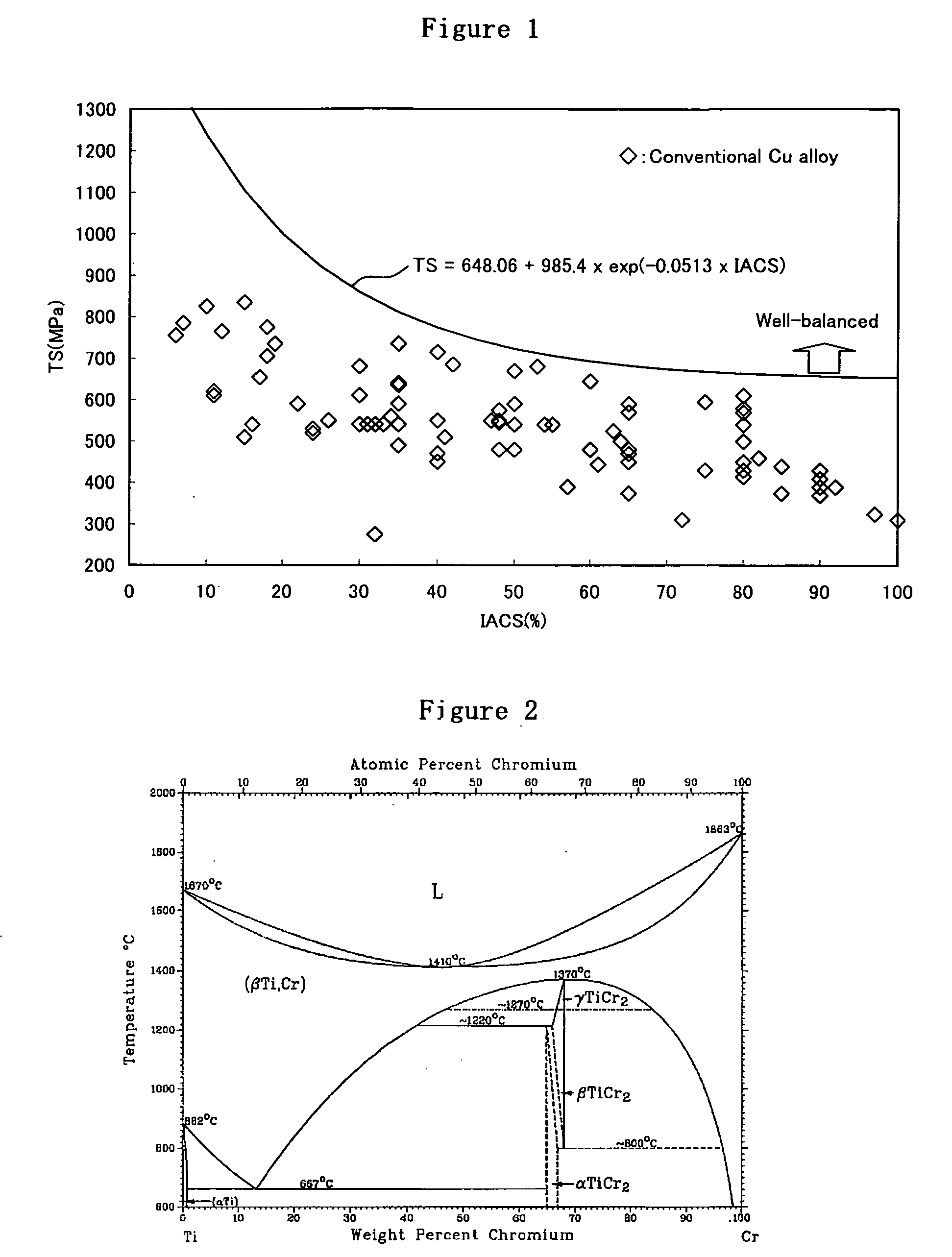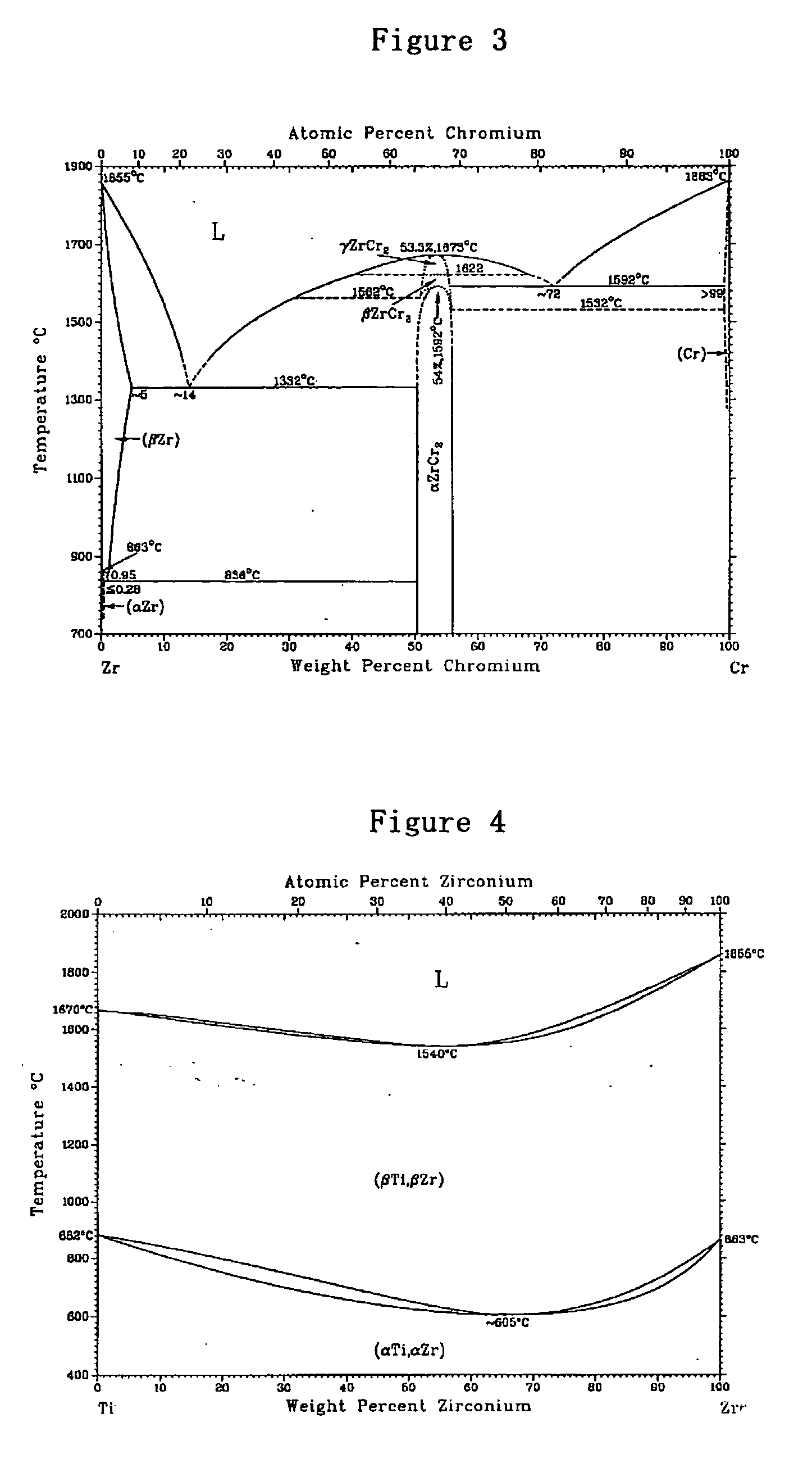Copper alloy and process for producing the same
a technology of copper alloy and process, applied in the field of copper alloy, can solve the problems of increasing production cost, difficult to simultaneously enhance both tensile strength [ts (mpa)] and electric conductivity, and achieve excellent high-temperature strength and workability, wide product variations, and excellent performan
- Summary
- Abstract
- Description
- Claims
- Application Information
AI Technical Summary
Benefits of technology
Problems solved by technology
Method used
Image
Examples
embodiments
Example 1
[0125] Copper alloys, having chemical compositions shown in Tables 1 to 4 were melted by a vacuum induction furnace, and cast in a zirconia-made mold, whereby slabs 12 mm thick were obtained. Each of rare earth elements was added alone or in a form of misch metal.
TABLE 1Chemical CompositionAlloy(mass %, Balance: Cu & Impurities)No.CrTiZrAg1 5.60*0.02— 6.01*2 4.50* 6.01*0.05—3 5.40*0.08 5.20*—4 4.62*— 5.99*—50.110.105.00—60.121.01—5.0070.182.98——80.104.98——90.980.15——101.051.020.400.20111.022.990.10—121.990.09——131.991.01——142.990.12—0.10153.001.00——162.983.01——172.994.98——18—0.100.113.4019—0.990.12—20—2.990.18—21—4.990.10—22—0.111.01—230.501.020.99—24—2.521.52—25—5.000.990.2526—0.122.00—27—0.981.97—28—3.012.01—29—4.991.99—30—0.103.01—31—1.013.01—32—3.002.99—330.104.992.98—340.115.000.102.10350.12—0.99—360.18—2.99—370.10—4.99—381.012.000.11—390.99—1.02—401.01—2.990.25410.99—5.00—422.00—0.12—431.97—0.98—442.01—3.01—451.99—4.990.10463.01—0.101.00473.01—1.01—482.99—3.00—492....
example 2
[0151] In order to examine the influence of the process, copper alloys having chemical compositions of Nos. 67, 114 and 127 shown in Tables 2 through 4 were melted in a high frequency furnace followed by casting in a ceramic mold, whereby slabs of thickness 12 mm×width 100 mm×length 130 mm were obtained. Each slab was then cooled in the same manner as Example 1 in order to determine an average cooling rate from the solidification starting temperature to 450° C. A specimen was produced from this slab under the conditions shown in Tables 10 to 12. The resulting specimen was examined for the total number of the precipitates and the intermetallics, tensile strength, electric conductivity, heat resisting temperature and bending workability. These results are also shown in Tables 10 to 12.
TABLE 10Production ConditionColling1st Rolling1st Heat Treatment2nd Rolling2nd Heat TreatmentAlloyRateTemp.ThicknessTemp.At-Temp.ThicknessTemp.DivisionNo.(° C. / s)(° C.)(mm)(° C.)Timemosphere(° C.)(mm)(...
example 3
[0155] Alloys having chemical compositions shown in Table 13 were melted in the atmosphere of a high frequency furnace and continuously casted in the two kinds of methods described below. The average cooling rate from the solidification starting temperature to 450° C. was controlled by an in-mold cooling or primary cooling, and a secondary cooling was using controlled a water atomization after leaving the mold. In each method, a proper amount of charcoal powder was added to the upper part of the melt during dissolving in order to lay the melt surface part in a reductive atmosphere.
[0156]
[0157] (1) In the horizontal continuous casting method, the melt was pored into a holding furnace by an upper joint, a substantial amount of charcoal. was thereafter similarly added in order to prevent the oxidation of the melt surface, and the slab was obtained by intermittent drawing using a graphite mold directly connected to the holding furnace. The average drawing rate was 200 mm / min.
[0158] (2...
PUM
| Property | Measurement | Unit |
|---|---|---|
| diameter | aaaaa | aaaaa |
| grain size | aaaaa | aaaaa |
| temperature | aaaaa | aaaaa |
Abstract
Description
Claims
Application Information
 Login to View More
Login to View More - R&D
- Intellectual Property
- Life Sciences
- Materials
- Tech Scout
- Unparalleled Data Quality
- Higher Quality Content
- 60% Fewer Hallucinations
Browse by: Latest US Patents, China's latest patents, Technical Efficacy Thesaurus, Application Domain, Technology Topic, Popular Technical Reports.
© 2025 PatSnap. All rights reserved.Legal|Privacy policy|Modern Slavery Act Transparency Statement|Sitemap|About US| Contact US: help@patsnap.com



